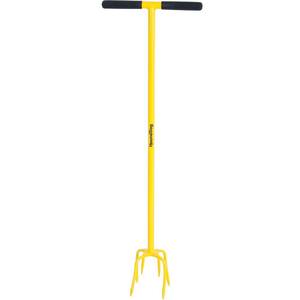If this is something you would like to try keep in mind that peanuts require about 4 months of heat, which will make it a very difficult plant to grow in many areas.
TLC-wise, I probably just have to make sure to provide more regular waterings than I did this time. And I should probably apply some natural fertilizers as the plants grow and bloom, as well as gypsum at bloom time as recommended by the Western Garden book of edibles (even though in this case blossoms were a few at a time but nearly continuous). This time I only fertilized when I sowed the seeds.
I have to say that the plants did and continue to do very well. I had absolutely no pest or disease issues whatsoever. However a tomato plant in a higher bed, behind the peanut test area, grew invasively and at one point nearly covered the peanut bed. And because I took too long to clear its invasive limbs , I think the peanut plants were set back several weeks, even though they did not yellow or seem to have otherwise suffered from lack of light like many other types of plants would have.
The plants are supposed to eventually die back and even though harvest should technically be after 120 days (very soon since I started in May), the plants are still green, thriving and blooming.
Out of curiosity I dug and searched for a sample peanut pod near one of the plants with a flower that appeared to have sent a shoot in the ground (that's where the peanuts appear). And I did find a pod. It's not yet harvest time so I only took out the one.
The pod is not shaped like I expected and I'm not sure if the ground was maybe too hard or if the shape has to do with this variety of peanuts which came from Ecuador. I'll probably know for sure at harvest time.
Also, I'm not sure if this is typical but only about 8 seeds out of 25 germinated, which seems like a very low rate of germination. It could be because of my less than regular waterings though. I'll have to correct the problems in my next attempt, and see if the germination rate improves.
Very likely I will only harvest enough peanuts to provide me with seeds for 2015. So I'm not sure how many I will be able to sample, for taste. But it is a fun experiment nonetheless.
I will write more about the actual result at harvest time.



















